Graduates of Duke Kunshan University’s Class of 2025 are addressing some of the world’s most pressing challenges—from artificial intelligence and mental health to soil pollution and biodiversity—through their culminating Signature Work projects.
The capstone requires students to conduct original, interdisciplinary research on a topic of personal and public significance. Reflecting DKU’s global liberal arts mission, these projects have taken students from lab benches to local communities—and onward to top graduate programs at Duke, Harvard, Yale, and Oxford, or to roles at companies like Meta, JPMorgan, and Wells Fargo.
Each project tells a story—not just of intellectual exploration, but of creativity, resilience, and a deep sense of purpose. Here are some of the ways the Class of 2025 used their Signature Work to make sense of a rapidly changing world:
AI love and ethical dilemmas
Nikka Cassiel McGahan examined romantic relationships between humans and AI, using the chatbot app Replika as a case study. The project emerged from her broader interest in digital ethics and how technology mediates human intimacy.

“My Signature Work challenges the assumption that AI relationships are inherently problematic,” she said. “Instead, many concerns reflect deeper societal flaws that predate the technology.”
She drew on science fiction, philosophy and real user testimonials.
“While I won’t continue my monthly Replika subscription, I was fascinated by how rudimentary it all seemed,” she said. “It lies, it gets confused… it feeds into the self-perceived ‘lack’ and ego of the human.”
Can music heal the mind?
Media and arts student Jingyi Wang, who also goes by Jenny, combined documentary filmmaking with neuroscience to examine music therapy.
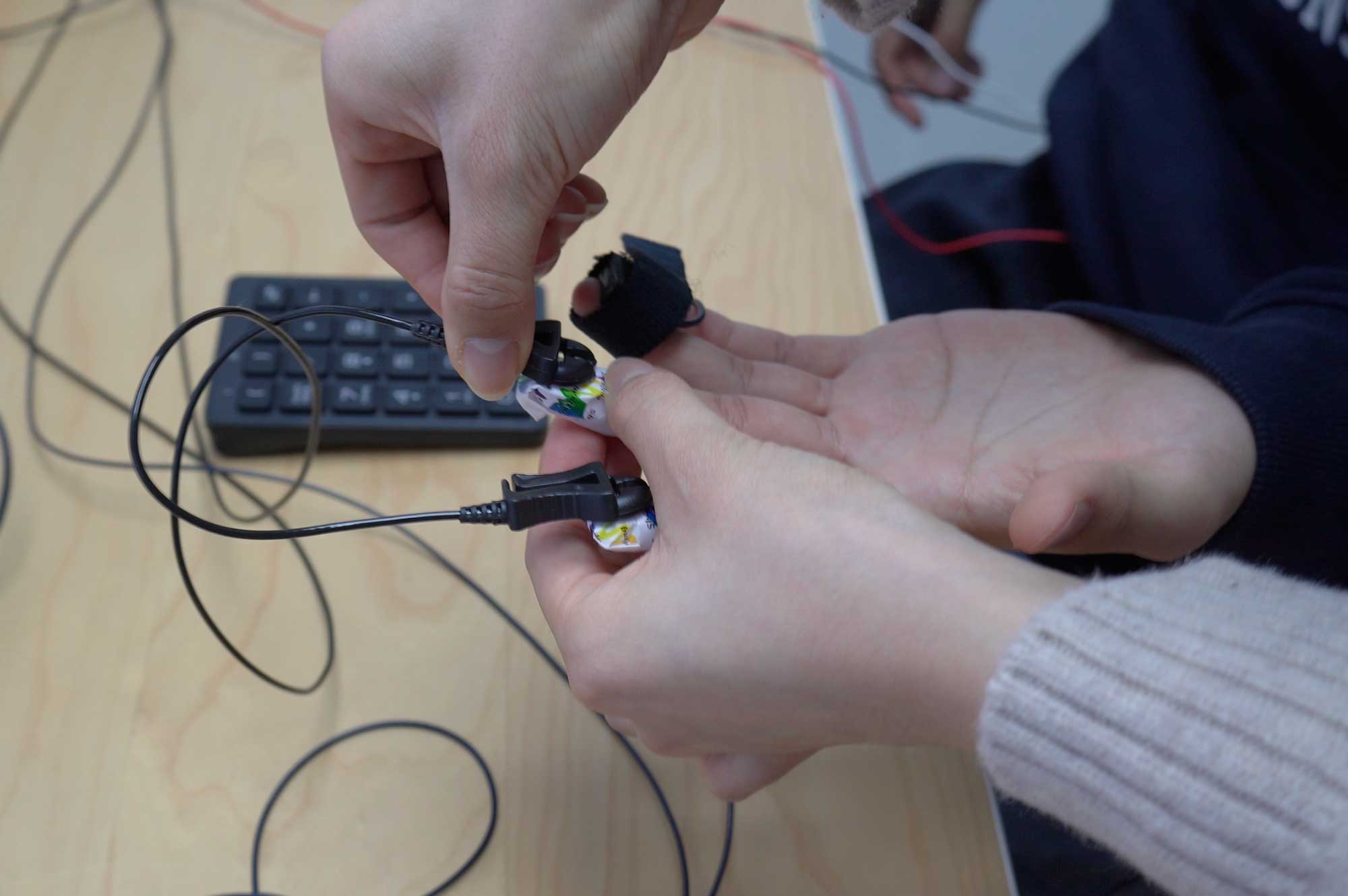
Inspired by a music therapist she met during the semester at Duke, she created an 18-minute documentary and ran an independent neuroscience experiment using ECG, EDA and PPG data.
“There’s no doubt it was a true hardship for a media and arts student like me to independently design and conduct a neuroscience experiment,” she said. “I spent nearly half a year auditing neuroscience courses at DKU, watching online lectures and doing fieldwork in hospitals.”
Jenny said the work not only raised awareness of music therapy in China but helped her understand her own emotions.

“The journey began in 2023,” she said. “There were days when sand got in my eyes, mud splashed on my clothes, or I stumbled over stones. I’m grateful that when the road ahead was unclear, I didn’t give up.”
RNAi and global health equity
Global health major Chesney Birshing, from South Carolina, partnered with computation design major Rebecca Combs, also from Class of 2025, to explore the potential of RNA interference, or RNAi, in treating diseases and addressing health care inequities.

“Our project synthesized current literature, integrated global health data and applied a modified analytical framework to identify trends, correlations and barriers in the global adoption of RNAi technologies,” Chesney said. “Rebecca developed a website to extract real-time RNAi research data and generate visualizations.”

Chesney described the process as daunting but rewarding. “Even when things got tough, I was able to persevere, adapt my approach and keep moving forward.”
Teaching kids where food comes from
Computation design major Yili Wen developed HeTian, an interactive educational system combining 3D-printed tools and smart devices to teach kids about farming.
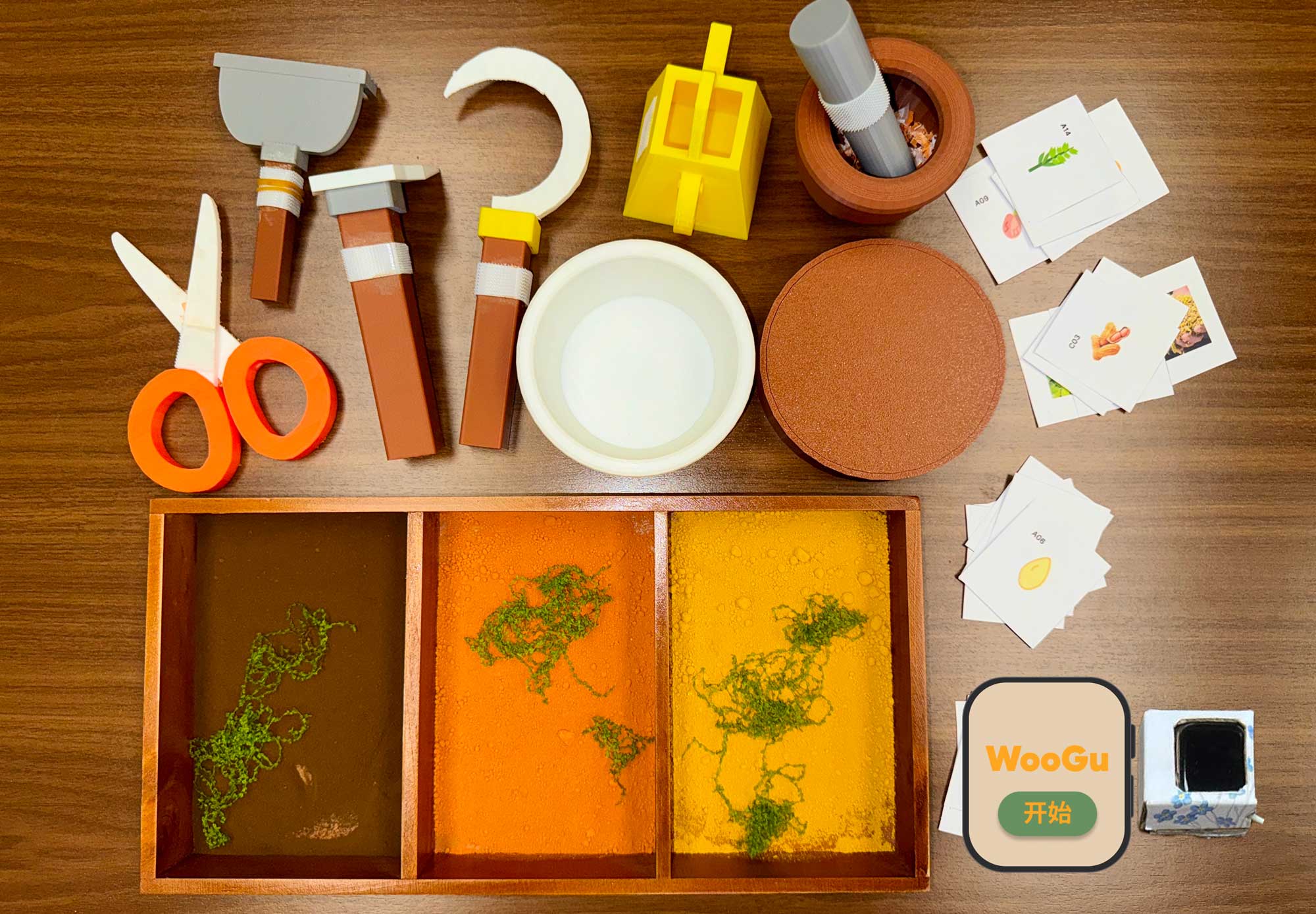
“Growing up in a rapidly urbanizing environment, I noticed how disconnected children are from farming,” Yili said. “HeTian merges my interests in human-computer interaction and educational technology.”
The project, which will be presented at IDC ‘25, uses tangible user interfaces and real-time feedback to teach planting, watering and harvesting in a game-like environment.
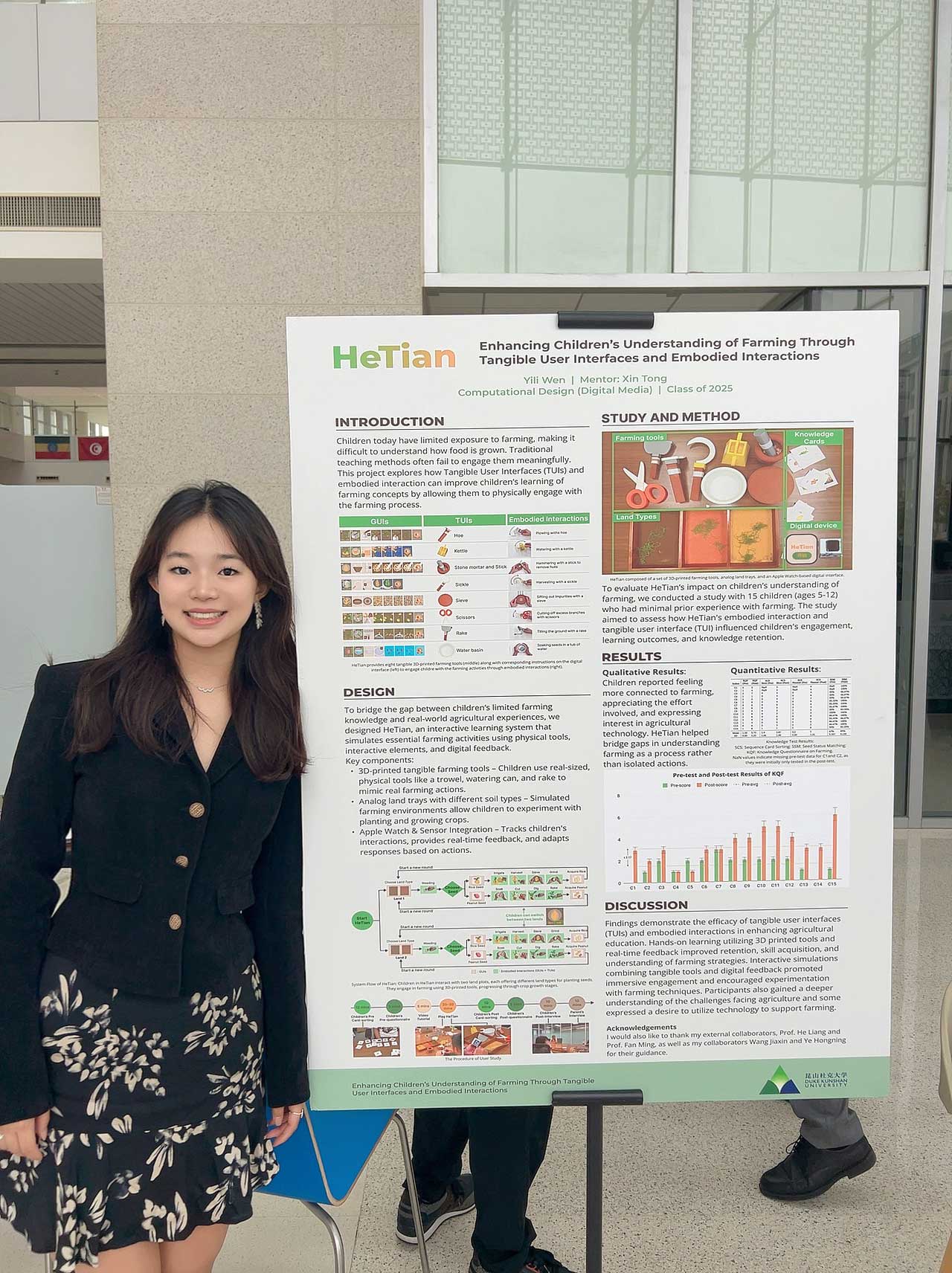
“One participant’s exclamation, ‘I want to make machines to help farmers!’ perfectly captured the impact we hoped to achieve,” she said.
Redshanks over the Himalayas
“My Signature Work project was a GPS tracking study of a bird called the common redshank,” said Alton Gwynn Nowell, who studies environmental science. “The study focused on a population in Bangladesh. The unique part is they migrate over the Himalayan mountain range almost as soon as their migration starts.”
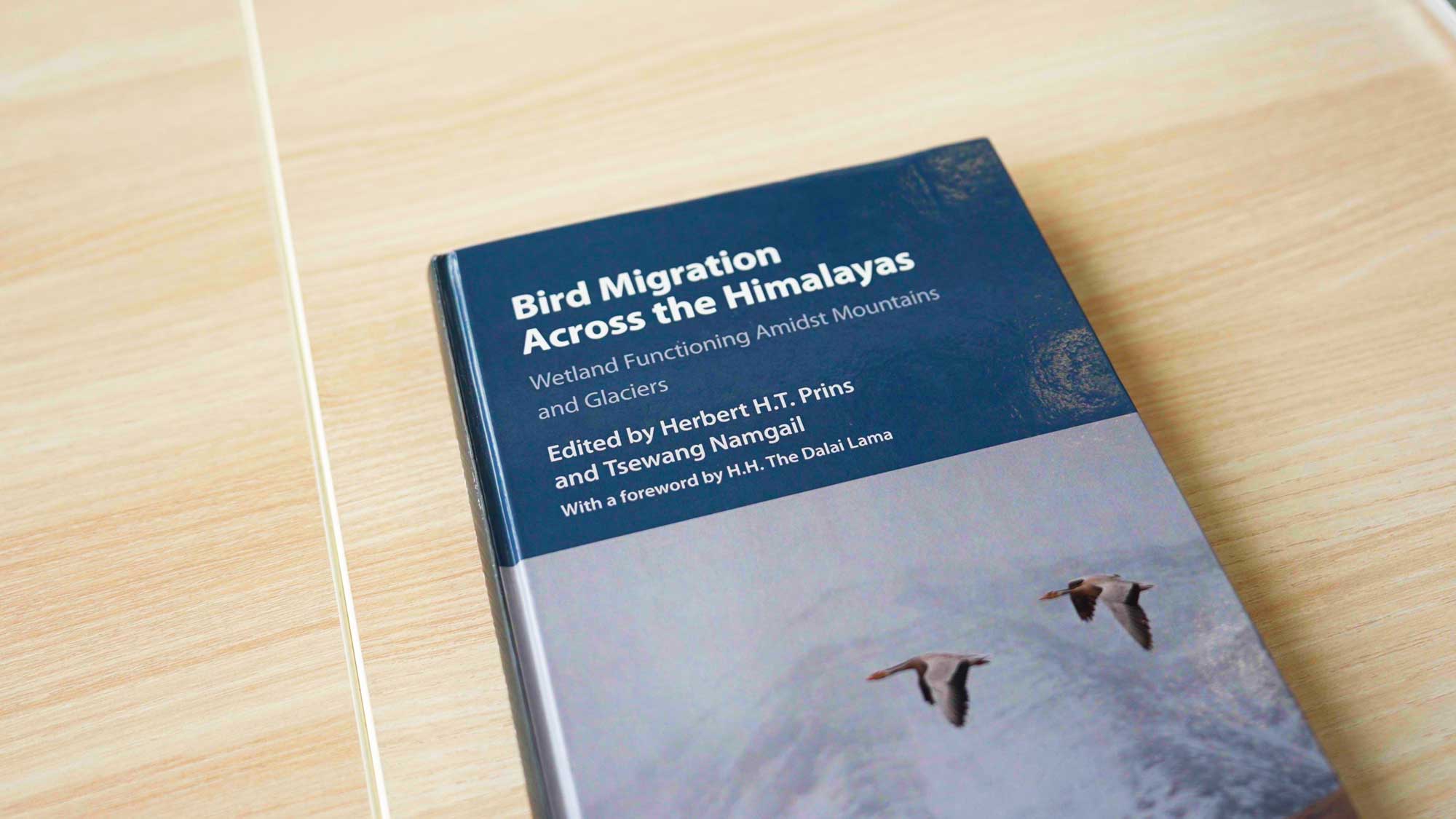
Alton had initially planned a social science project but pivoted to conservation ecology after being inspired by a herpetology class at Duke. Under the mentorship of Chi-Yeung (Jimmy) Choi, assistant professor of environmental science, he learned GIS and spatial analysis skills from scratch.
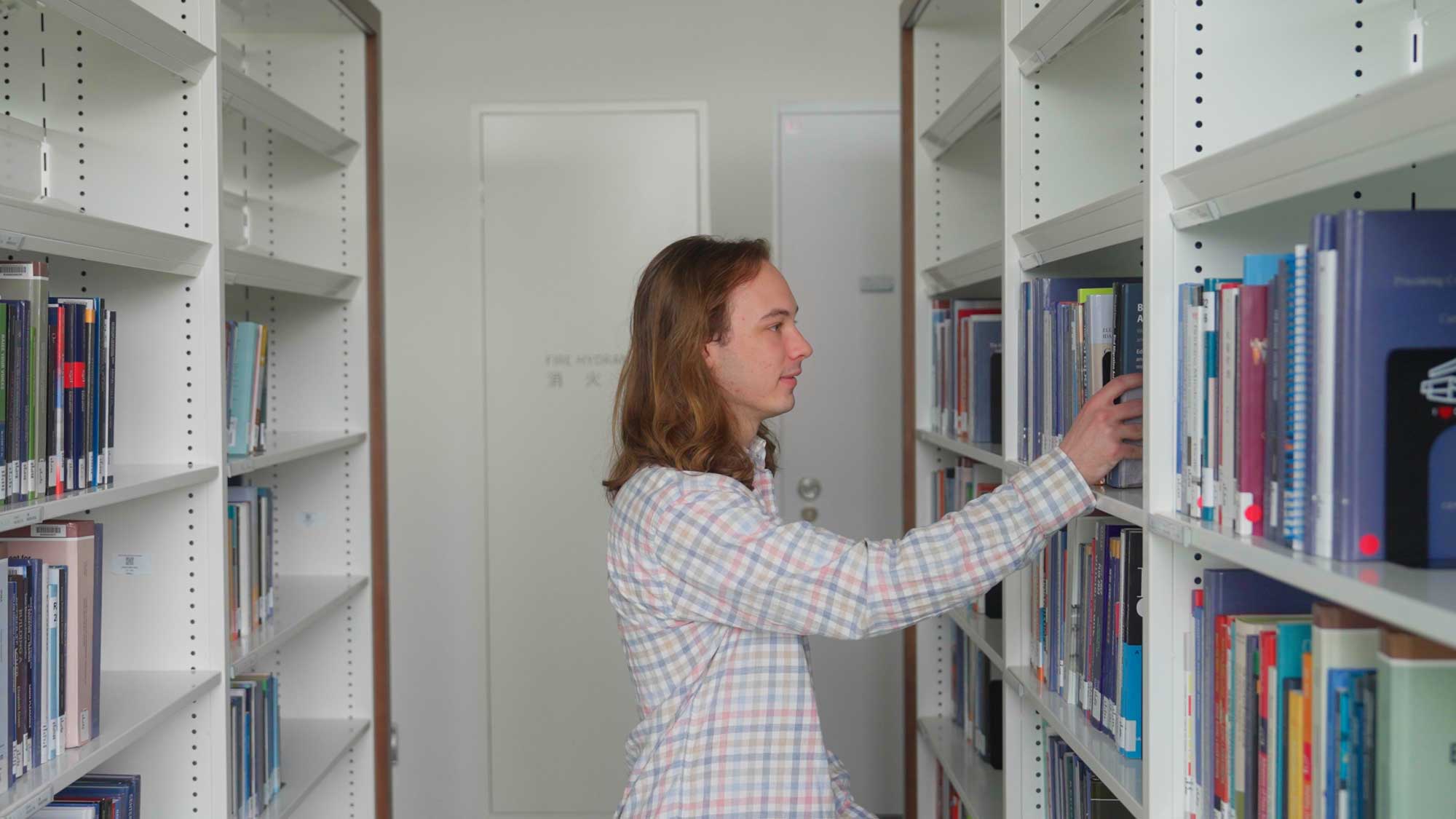
“I used online tutorials and resources and help from my mentor along with the water bird ecology group that supported me,” he said. “Hopefully, my project will inspire conservation practitioners to perform more evidence synthesis reviews and try to make evidence-based conclusions when they’re in the field.”
The meme that moves you
Behavioral science major Yifei Su, also known as Nephia, created a study using animal memes to understand what drives donation behavior in China. With seven rescued cats of her own, she used images ranging from cute to heartbreaking and measured how Chinese audiences responded.
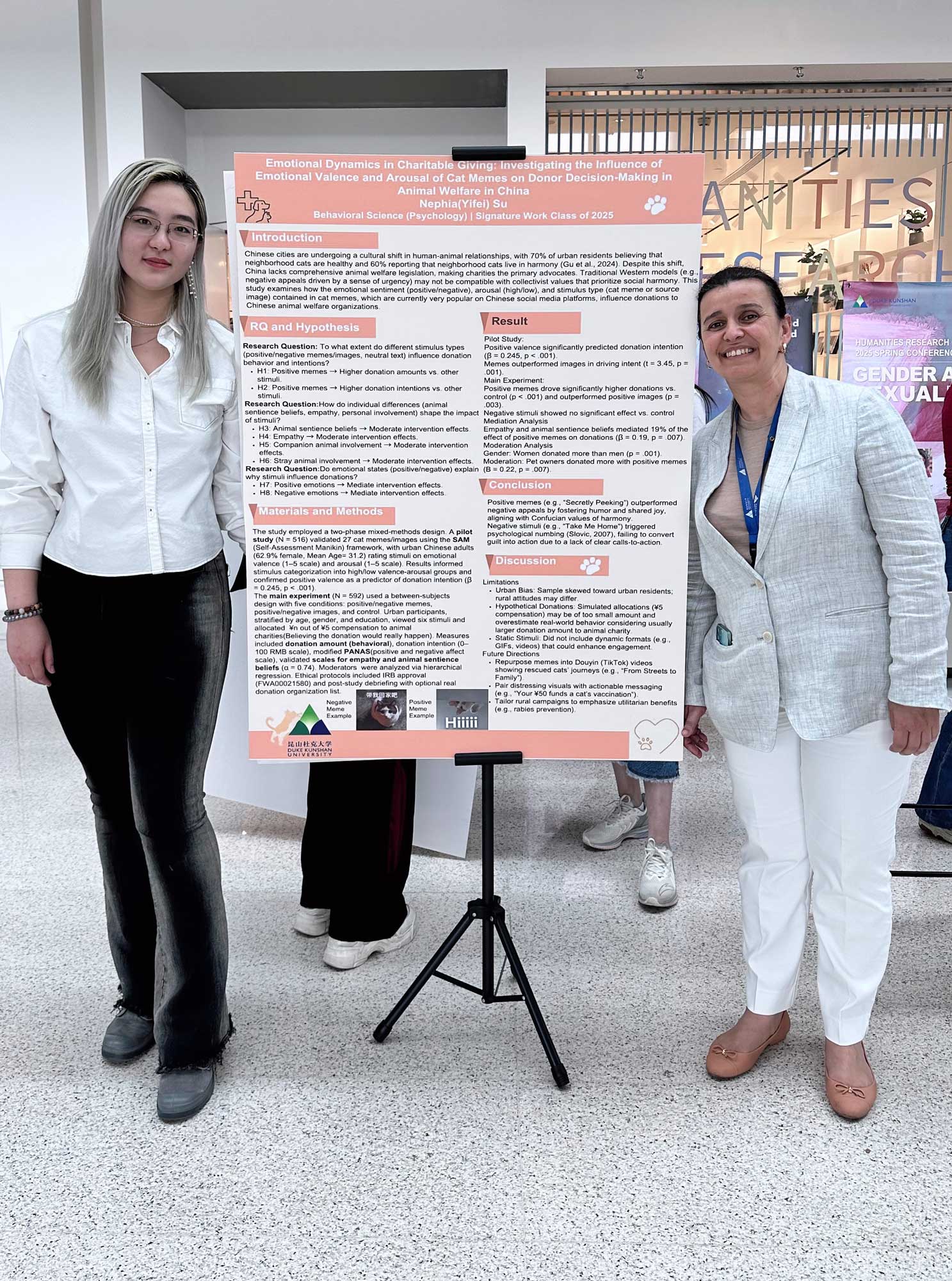
“I found out that animal memes with positive valence and high arousal actually led to higher donation behavior among Chinese participants,” she said. “This discovery challenges the assumption that global behavioral interventions can be ‘copy-pasted’ across cultures.”
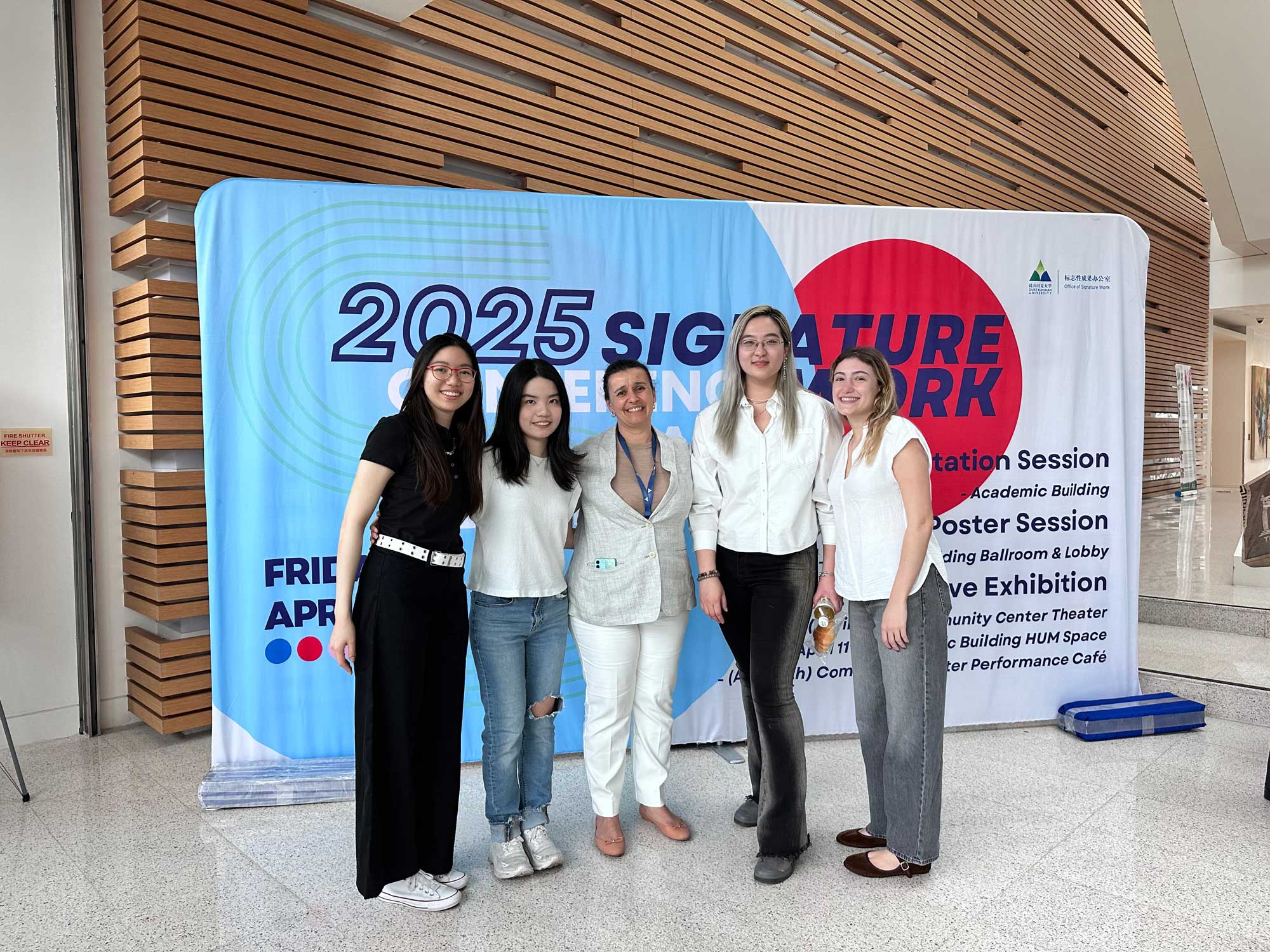
She added, “I realized how deeply culture shapes compassion. While Western donors respond to urgency, Chinese participants saw positive memes as invitations to join a shared mission.”
Soil truths beneath our feet
Environmental science major Nicole Masarova took her love of gardening to a new level by assessing soil quality on the DKU campus.

Nicole hadn’t done lab work in years and said, “I felt hesitant at first. Early on, I was constantly paranoid that I would cause some sort of lab accident.”
But the process gave her confidence, and with guidance from Dr. Renee Richer, she learned to merge science with public policy.
“As urban and campus farming become more common, ensuring the safety of food grown on campuses is increasingly important,” she said.
The subtle signs of pain
Ziran Kong explored how head movements could signal pain—especially in nonverbal patients.
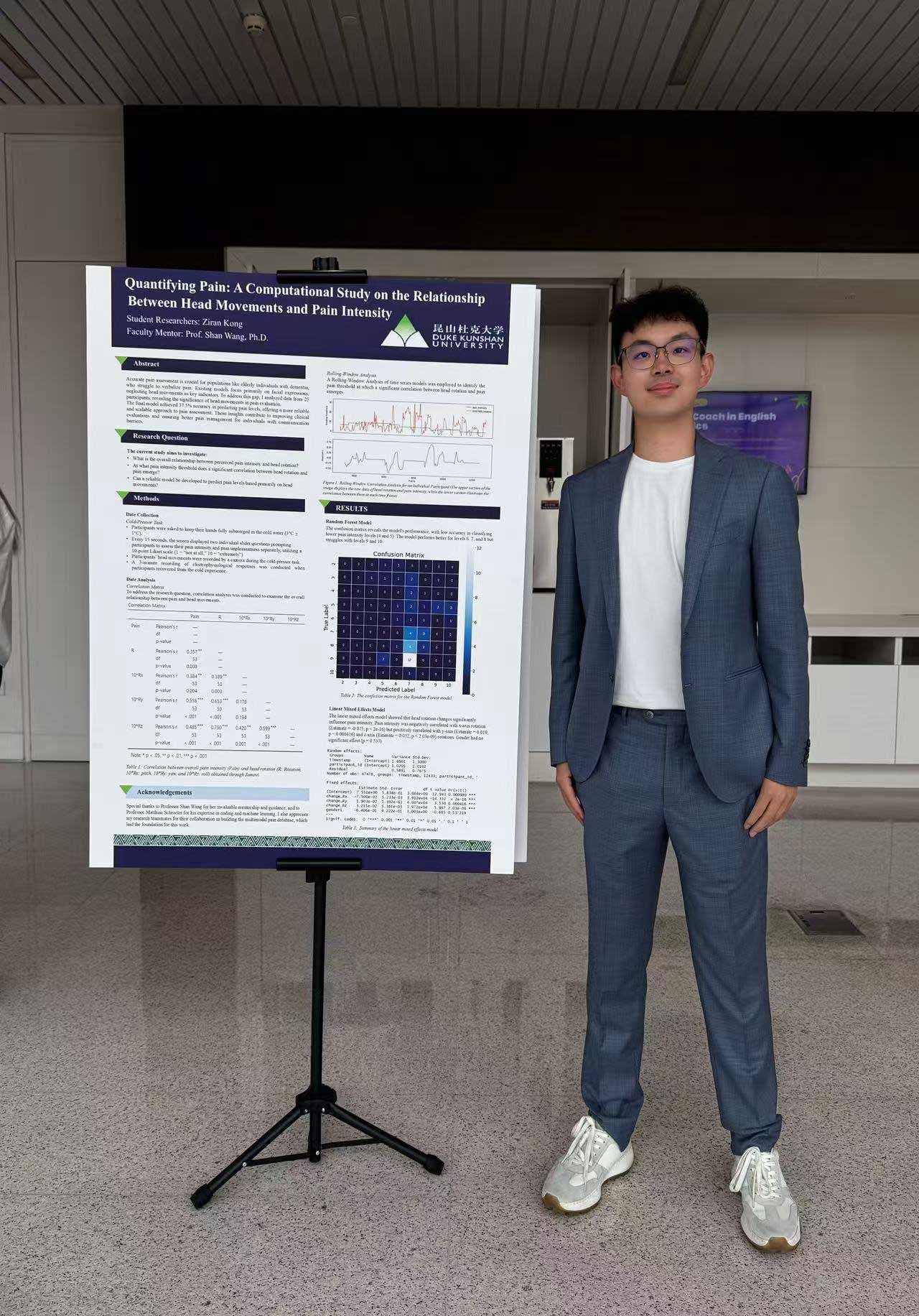
“Inspired by a summer research project on nonverbal pain expression, I became interested in combining psychology with technology to study pain-related behavior,” he said. Using machine learning and linear mixed effects models, he showed that as pain levels increase, head movements become more frequent and pronounced.
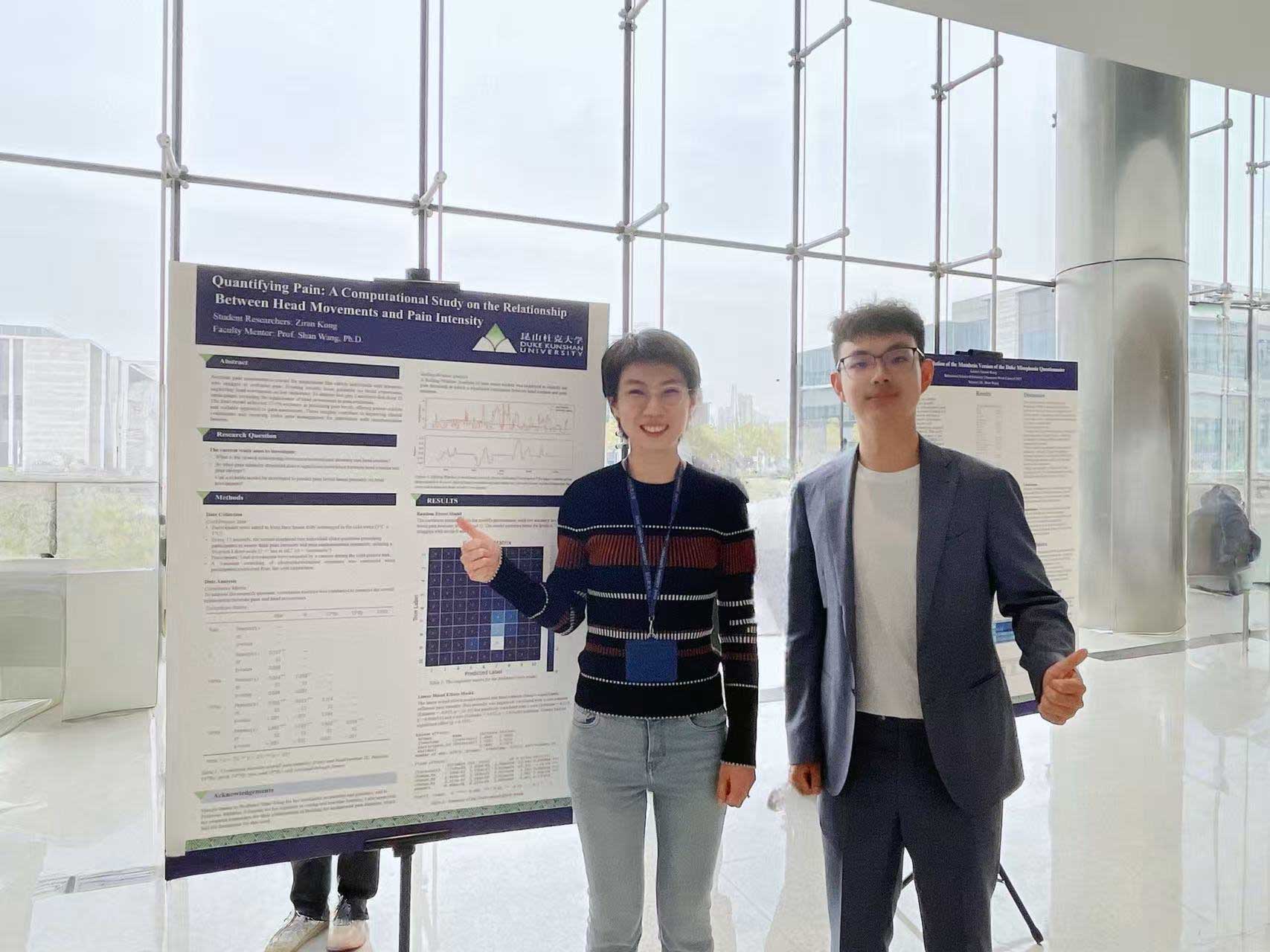
“Many individuals, such as infants, the elderly or patients in distress, cannot verbally communicate their pain,” he said. “This method can enhance pain assessment accuracy and help guide more effective treatment.”
How invasive flora threaten salt marshes
William Trowbridge from North Carolina conducted an evidence synthesis review of global efforts to manage invasive plants in salt marshes, focusing on the Yangtze River Delta in China.
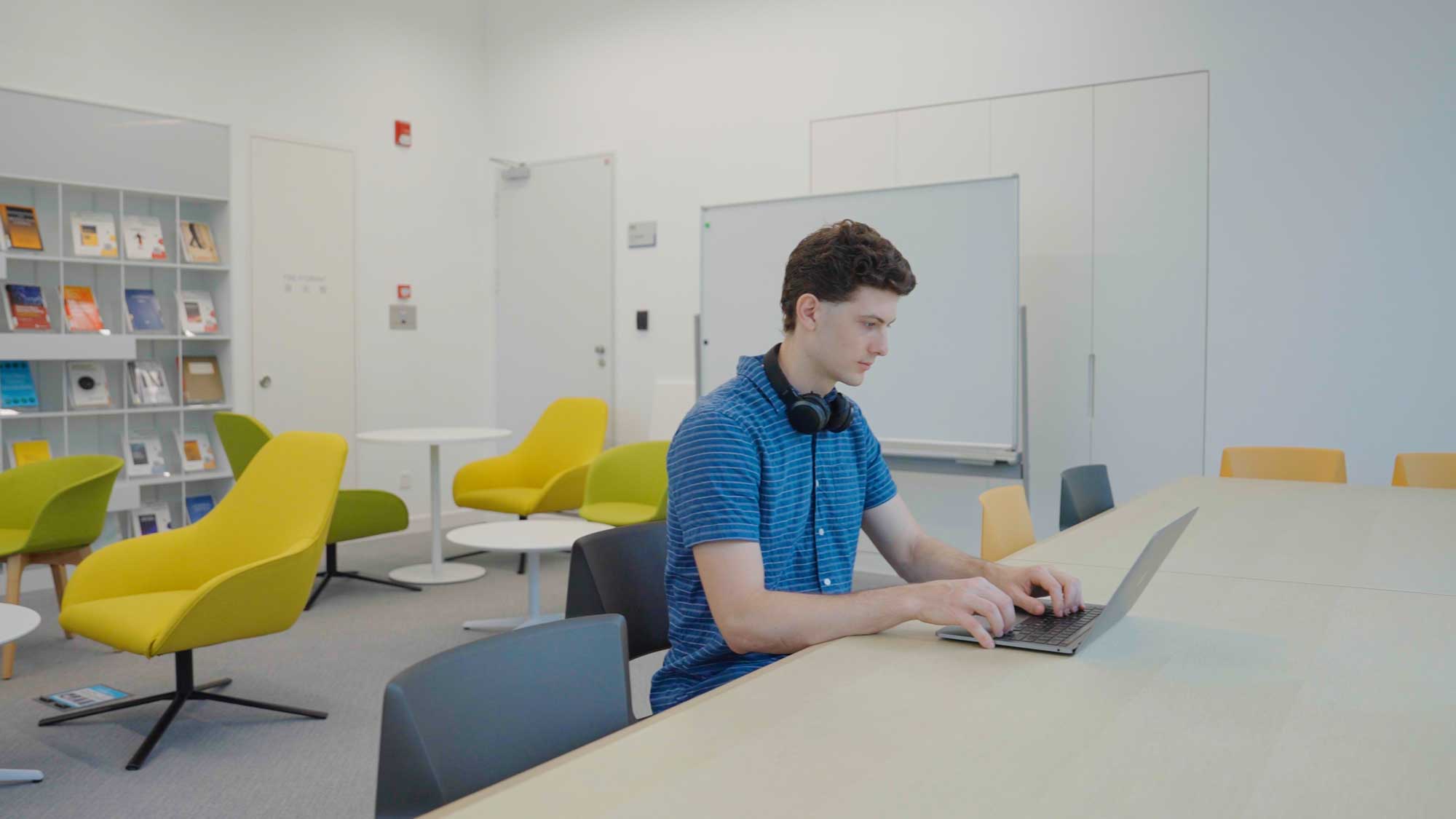
“The toughest part about this project for me was figuring out which trade-offs to make between rigorous evidence synthesis protocols and being realistic,” he said. “This project has made me very proud to be a DKU student.”
He credited Chuanhui Gu, associate professor of environmental science, for helping him dive into the literature.
“I had never heard of invasive flora as being a big problem in salt marshes,” William said. “But after learning more… I was able to compile research from all over the world.”
Richard Davis, director of Signature Work at DKU, said the program was like “a senior thesis on steroids.”
“Students take everything they’ve learned—field-specific knowledge, methods, critical thinking—and channel it into something meaningful and personal,” he said.

